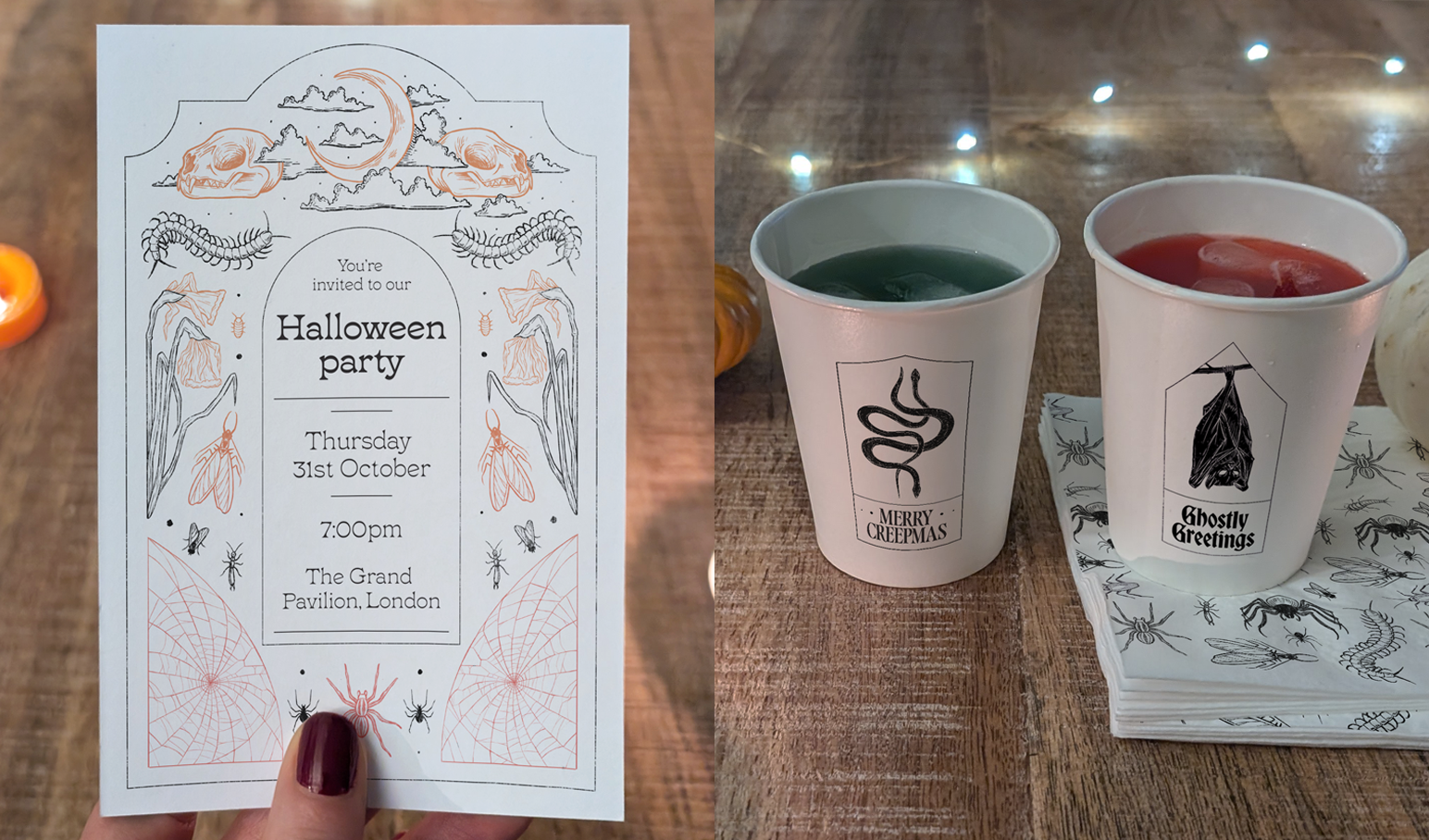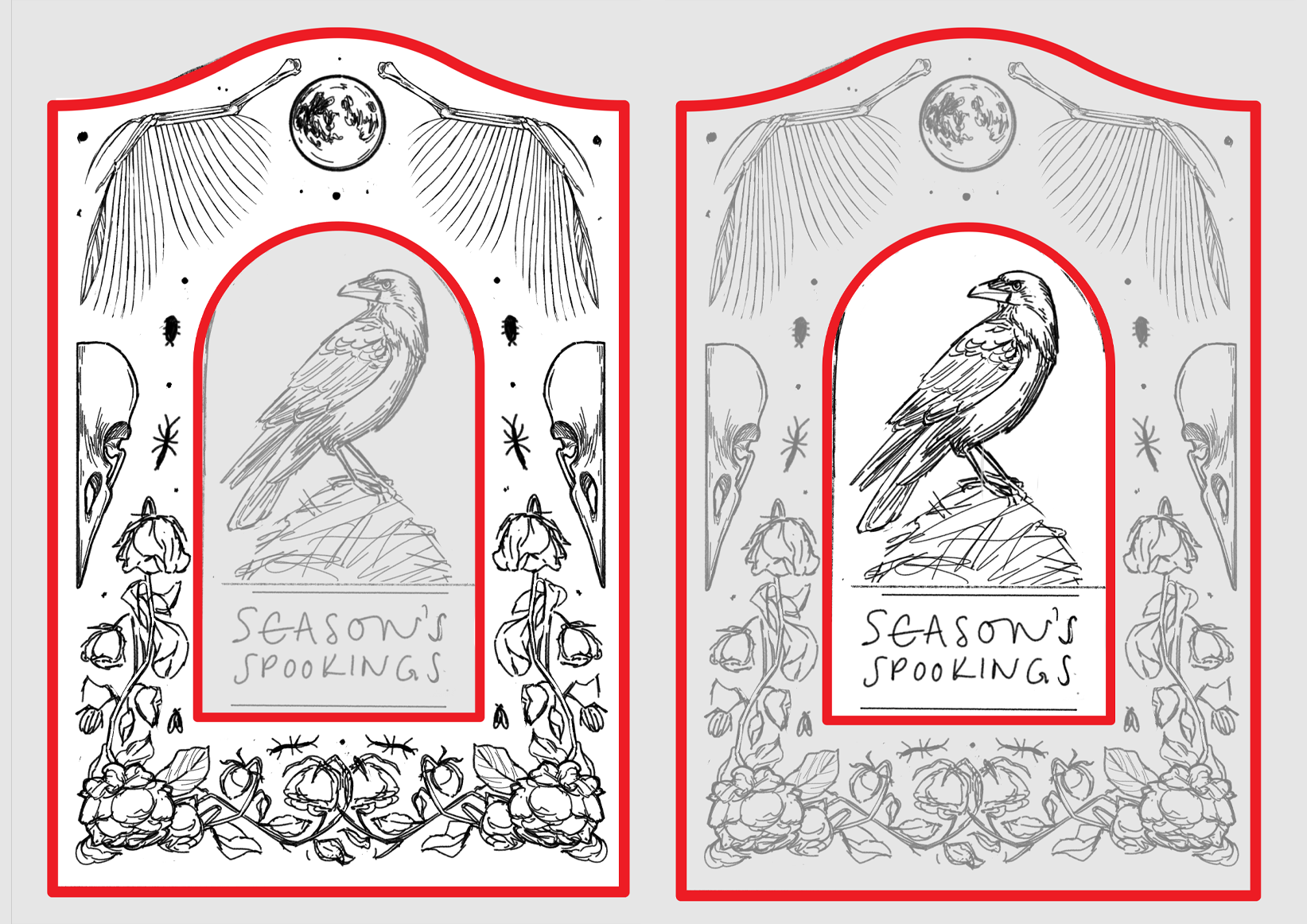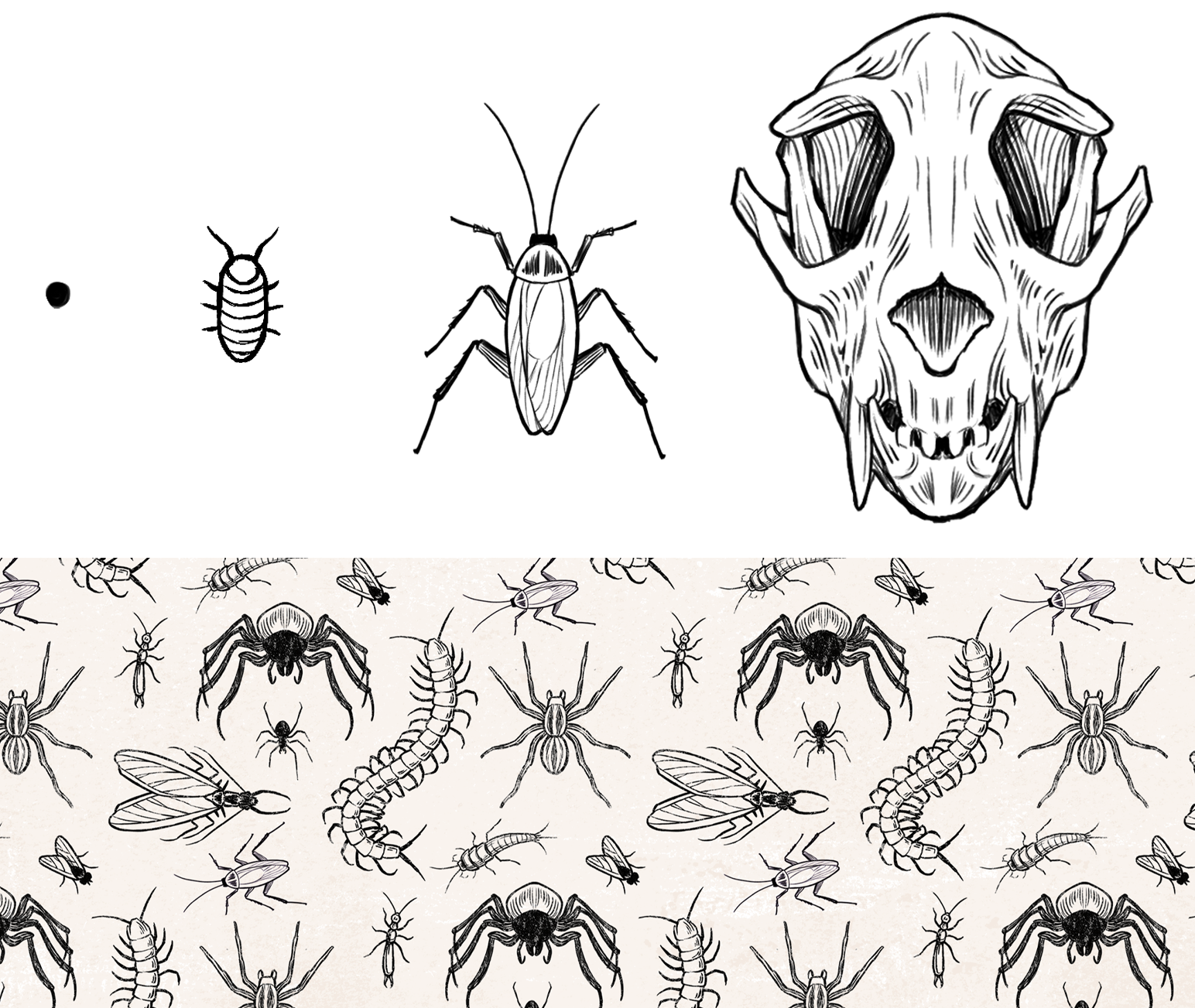How I created a versatile set of Halloween illustrations
Illustration can add so much value to a brand: it has the power to bring uniqueness and personality, making a brand something that people take notice of, feel connected to and want to engage with. However, crafting high quality illustrations that stand out from the crowd can be a very time consuming process. It’s therefore vital to think about how we can get the most out of an illustration project, to guarantee that it’s made with purpose and is adaptable to different outputs, ensuring it strengthens a brand’s presence while maintaining consistency.
That’s why I want to walk through the process of how I created a set of illustrations for Halloween that’s designed for a multitude of different applications. Here I’ll show that when crafted thoughtfully, an illustration pack can be applied in a versatile way to a number of different formats, while maintaining visual consistency.
1. Think about where it will be used
Firstly I’ll write a list of all the outputs the illustrations will be used for, and think about what are the most important factors for those outputs. For this set, I considered the following:
Merchandise (halloween themed clothing, cups and mugs)
Partyware (paper plates, napkins, paper candy bags and paper cups)
Invitations (printed and digital)
Greetings cards
In the case of each item, I thought about what the most important aspect is to get across. For example, with invitations, the most important aspect will be the information: when and where the event is hosted. For merchandise, being visually fun and engaging will take priority.
2. Section out the composition
I chose the greetings card format as the starting point to create my illustration. Greeting cards offer an ideal canvas for the main composition, allowing me to balance both decorative and functional elements. I’ll make the design in this format first, while considering how it will then be adapted into different applications.
I divided my composition into two sections: one interior and one exterior. This gives me the flexibility to apply the exterior as a framing device for outputs that need more text, and the interior to be used on its own for smaller or more minimal applications.
3. Think about the edges
When sketching out my initial ideas, I made sure that each element of the designs has strong parameters, which means that it can be lifted out and applied separately from the composition as a whole. By thinking about this early on, I can easily take sections and apply them in a different way later. Allowing for that flexibility means the illustrations can be applied in new and interesting ways while remaining visually consistent with the campaign or brand.
4. Consider size and complexity of elements
Including a variety of sizes and complexity of visual elements gives me even more flexibility in how I apply the illustrations. For example, larger more intricate elements can serve as focal points for larger items like posters, whereas smaller elements can be repurposed into a repeat pattern which works excellently on items such as gift wrap, napkins and digital wallpaper.
5. Review how the project went
It’s always important to allow some time to review a project once its completed. To review, I ask myself the following questions:
What did I think was most effective about this project?
What challenges did I face and how can I improve on them for the next project?
If I had all the time and money in the world, how could I push this design further?
I recommend writing down your answers in order to solidify them and also to ensure that you have them for reference in the future. This will help keep track of the progress of your craft overall.
I’ll also seek feedback from other creatives, friends and loved ones. Bear in mind though that these lovely people generally want to be supportive of the creative process and don’t want to risk stifling the creative flame in someone, which is very kind. However this can pose a challenge when trying to achieve constructive feedback that can be effectively carried forward. One way to address this is to ask specific, open-ended questions to encourage people to feel comfortable sharing their opinion on a project. For example, I might ask:
What is the purpose of this design?
Who do you think the audience is for this design?
What do you think is the most and least effective part of this design?
Which one thing would you change about this design?
It can be very difficult and time consuming for others to provide feedback on projects, so I think its important to make sure they feel my gratitude for doing so and are positively reinforced for their amazing support.
How can I help you?
If you’d like to find out how I can help your brand to boost its communications with a versatile illustration pack, get in touch today!






